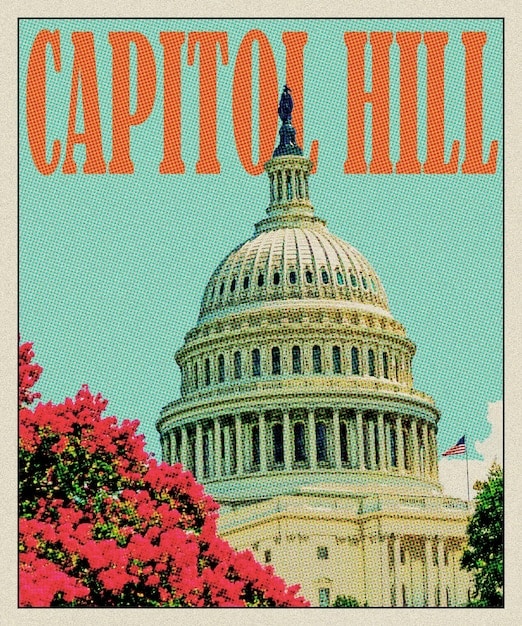NFTs and Journalistic Integrity: A US Perspective in 2025

The Role of NFTs in Preserving Journalistic Integrity in the US: A 2025 Perspective suggests that Non-Fungible Tokens (NFTs) could offer new revenue streams, enhanced transparency, and greater independence for journalists, potentially revitalizing the industry and fostering trust with audiences.
In an era marked by eroding trust in traditional media and dwindling revenue streams for journalists, innovative solutions are desperately needed. Exploring the Role of NFTs in Preserving Journalistic Integrity in the US: A 2025 Perspective, we delve into how blockchain technology might reshape the landscape of news and information.
The promise of NFTs for news organizations
NFTs present a paradigm shift by enabling direct support from readers, fostering a more sustainable financial model that prioritizes quality journalism over clickbait and sensationalism. This section examines the core benefits NFTs bring to the table.
Direct monetization of content
NFTs allow journalists and news organizations to tokenize their articles, photos, and videos, selling them directly to consumers. This bypasses traditional advertising models, reducing reliance on algorithms and external platforms.
Enhanced content ownership
NFTs ensure verifiable ownership of journalistic work, protecting against plagiarism and unauthorized distribution. This is particularly crucial in the digital age where content is easily copied and shared without attribution.
- NFTs offer a clear and immutable record of authorship on the blockchain.
- Tokenization allows for granular control over content usage and licensing.
- Journalists can set royalties for secondary sales, ensuring continued income from their work.
The ability to directly monetize quality content and assert clear ownership rights could be a game-changer, injecting much-needed capital into newsrooms and empowering individual journalists.

NFT-powered models in action
Several innovative models are already emerging, demonstrating the potential of NFTs to revolutionize journalistic practices. This section looks at some concrete examples and considers the implications for the future.
Tokenized subscriptions and memberships
News organizations can offer NFT-based subscriptions that provide exclusive access to content, events, and community forums. These NFTs can also grant voting rights on editorial decisions, fostering greater engagement with readers.
Decentralized news cooperatives
NFTs can facilitate the formation of decentralized autonomous organizations (DAOs) where journalists and community members collectively own and govern a news platform. This eliminates centralized control and promotes transparency.
- DAOs use smart contracts to automate content distribution and revenue sharing.
- Community members can propose and vote on editorial policies and funding priorities.
- NFTs represent ownership stakes in the DAO, incentivizing participation and responsible governance.
By exploring tokenized subscriptions and decentralized news cooperatives, journalists can build more resilient and community-driven models, putting themselves back in control of their profession.
Combating disinformation with blockchain
In the fight against fake news and propaganda, the unique features of blockchain technology offer powerful tools for verifying sources and establishing trust. This section investigates how NFTs can contribute to a more reliable information ecosystem.
Verifiable authorship and provenance
NFTs can be used to certify the authenticity and origin of news articles and photographs, making it easier to identify and debunk false information. This can help restore trust in reputable news sources.
Decentralized fact-checking platforms
Blockchain-based platforms can incentivize users to collaboratively fact-check news stories, rewarding accurate reporting and penalizing the spread of disinformation. NFTs can be used to represent contributions and reputation within these platforms.

By leveraging the immutability and transparency of the blockchain, NFTs can add an extra layer of verification to news content, making it harder for malicious actors to manipulate public opinion.
Challenges and considerations
Despite their immense potential, the adoption of NFTs in journalism faces several hurdles. This segment considers some of the challenges that need to be addressed for widespread implementation.
Environmental concerns
The energy consumption associated with certain blockchain technologies has raised environmental concerns. Fortunately, newer, more energy-efficient protocols are emerging that mitigate these issues.
Accessibility and usability
The technical complexities of NFTs can be a barrier to entry for both journalists and readers. User-friendly platforms and educational resources are needed to make NFTs more accessible.
- Simplifying the process of creating and trading NFTs.
- Developing intuitive interfaces and wallet solutions.
- Providing clear explanations of blockchain concepts for the general public.
To overcome these challenges, the industry needs to prioritize sustainability, accessibility, and education, ensuring that everyone can benefit from the transformative power of NFTs.
Regulatory landscape and legal implications
As NFTs become more integrated into the media landscape, it is crucial to consider the legal and regulatory implications. This section offers an overview of the key issues and challenges.
Copyright and intellectual property
Clear legal frameworks are needed to address copyright issues related to tokenized journalistic content. This includes defining ownership rights and establishing mechanisms for enforcing intellectual property laws on the blockchain.
Data privacy and security
News organizations must ensure that the use of NFTs complies with data privacy regulations such as GDPR and CCPA. This requires implementing robust security measures to protect user data and prevent fraud.
Addressing these legal and regulatory challenges is essential for fostering a sustainable and responsible NFT ecosystem in journalism.
The future of journalistic integrity with NFTs
Looking ahead to 2025, the integration of NFTs into the journalism sector is poised to profoundly impact its structure, funding, and relationship with the public. This part envisions the long-term transformation.
Empowered individual journalists
NFTs will enable independent journalists to build direct relationships with their audiences, bypassing traditional gatekeepers and gaining greater control over their careers. This will foster more diverse and independent voices in the media landscape.
A more sustainable news ecosystem
NFTs will create new revenue streams for news organizations, reducing their reliance on advertising and external funding. This will enable them to invest in quality journalism and better serve their communities.
- Subscription models facilitated by fractionalized NFTs.
- Micro-payments earned with each content consumption.
- Fair royalty systems embedded in smart contracts.
NFTs have the potential to usher in a new era of journalistic integrity, fostering a more sustainable, transparent, and trustworthy news ecosystem that empowers both journalists and the public.
| Key Point | Brief Description |
|---|---|
| 💰 Direct Monetization | NFTs allow journalists to sell their work directly to consumers, bypassing traditional advertising models. |
| ✅ Verifiable Authorship | NFTs ensure verifiable ownership, protecting against plagiarism and unauthorized distribution. |
| 🛡️ Combating Disinformation | NFTs provide tools to verify sources, helping to fight fake news and establish trust. |
| 🤝 Community Driven | NFTs facilitate DAOs, where journalists and community members collectively own and govern news platforms. |
Frequently Asked Questions
▼
NFTs, or Non-Fungible Tokens, are unique digital assets that represent ownership of items like art, music, or in this case, journalistic content, stored on a blockchain.
▼
NFTs offer journalists new revenue streams by allowing them to sell their work directly to consumers, bypassing traditional advertising models and gatekeepers.
▼
The environmental impact depends on the blockchain used. Newer blockchains use more energy-efficient methods to minimize environmental concerns associated with NFTs.
▼
NFTs can certify the authenticity and origin of news articles, making it easier to identify and debunk false information, enhancing trust in credible news sources.
▼
It’s a news platform owned and governed by journalists and community members collectively, using NFTs and blockchain to eliminate centralized control and promote transparency.
Conclusion
As we look towards 2025, the Role of NFTs in Preserving Journalistic Integrity in the US: A 2025 Perspective illuminates a promising path forward for the industry, offering innovative solutions for revenue generation, content ownership, and combating disinformation. By embracing these technologies, journalism can regain its financial footing, restore trust with audiences, and ensure a vibrant and independent future.





